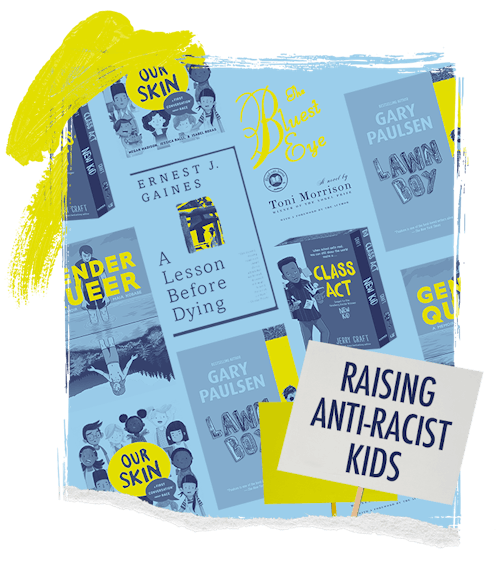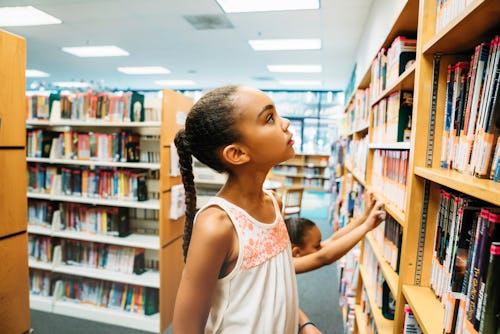
When I was a kid in Trinidad, I would discover a book at my school library or my aunt’s apartment and disappear into another world, losing myself in the characters, the stories, and the lessons. Books exposed me to people who weren’t like me, who lived completely different, fascinating lives and whose stories helped define nuanced, multifaceted existences I knew little about. My love for books and respect for their power is the reason I am absolutely sickened by the recent wave of book banning attempts — and successes — across the country.
From York County, PA., to Katy, Texas, the fight to censor books that reflect a range of identities, and that address race and racism head-on, is raging. Just this week, the Tennessee Board of Education rejected an attempt to ban a curriculum that incorporates books focused on Martin Luther King Jr. and Ruby Bridges. The complaint, thankfully squashed, claimed the “anti-white” books violated a state law banning the teaching of critical race theory (CRT).
In October, a Texas lawmaker created a list of 850 books that he claims “cause discomfort.” He’s demanding that school districts report to him if those books are currently in their libraries. A Utah school district recently pulled Toni Morrison’s seminal work The Bluest Eye from their high school library shelves, along with seven other vital titles. Author Jerry Craft, the brilliant mind behind New Kid and Class Act, is facing bans of his books that speak to the experience of Black kids struggling to fit into white centered spaces.
Many times, banning attempts are undertaken in a sweeping manner that rejects careful analysis.
This zealous wave of censorship is entangled in the misguided and warped controversy over CRT, which itself is serving as a catch-all resistance to any education that truthfully teaches about experiences that fall outside a white-dominated framework. Many times, banning attempts are undertaken in a sweeping manner that rejects careful analysis. For example, Virginia Beach school board member Victoria Manning called forth her issues with Lawn Boy by Jonathan Evison, Gender Queer by Maia Kobabe, A Lesson Before Dying by Ernest Gaines and The Bluest Eye in an October email to her disctrict’s superintendent without even fully reading the books.
Our Skin, a beautiful board book that addresses identity and race, written by Megan Madison and Jessica Ralli, is also facing heat. From a school district in Westfield, New Jersey, to a library in North Carolina (where Ralli tells me the book was banned a day after the adoption of a new diversity and inclusion policy), Ralli says Our Skin is being classified as harmful to white kids and likely to give Black kids a “victim complex.”
I can’t stress enough the harm in this, and the need for us to take action. For kids from historically marginalized communities, like Black kids, Indigenous kids, Latine kids, queer kids, or kids with disabilities, finding themselves reflected in the books is not simply empowering — books can be life-affirming. They help children feel less lonely and isolated, especially in white-dominated environments, and especially if they aren’t comfortable discussing their struggles. For white kids, reading is a way to foster an understanding of the experience of kids who aren’t like them, especially if they live in homogenous communities.
While some parents and caregivers are vocal about their support for these egregious book bans, here’s the real truth: us parents and caregivers who seek truth and justice have immense power to take action and get loud about the books our kids need to read. I spoke to Madison and Ralli about what we can do to stop book bans. Here are a few ways to get involved:
1. Stay Vigilant & Do Your Research
The first course of action is figuring out what’s happening right now in your school district. In the case of the book ban in Pennsylvania, a diversity committee actually originally put the list of books together as a resource list. Instead, a few parents protested and the vote to ban the entire list went through without much fight, until the start of the school year, when teachers and students protested successfully to have them reinstated.
2. Find Community
The next step is to find teachers, students, librarians, parents and caregivers like you that are ready to fight. “Gather five of your parent friends and do it together,” says Madison, who is also an educator and organizer.

3. Create momentum.
Once you have your community, create a plan. Create a petition online, plan a protest, or start a Facebook group. We’ve all heard that there’s strength in numbers. It’s true not just for those advocating for censorship — in fact, often those groups are a small but vocal minority.
4. Advocate at school board meetings.
Once you’ve organized your people, show up to meetings and make it known that your community won’t be letting book bans slide by without a fight. And while you’re at it, run for school board, as Madison says. Be one of the decision-makers who can help shape the education of so many children.
5. Buy these books for kids to read at home.
Yes, we’re aiming for community solutions, not individualized ones. But, you know, lists of banned books are a good place to start your holiday shopping list for all the kids in your life. “Read these books with kids and develop your own opinion,” Madison says.
6. Support libraries.
Along with schools, many libraries are facing a push to censor their books. “It's essential that we continue to be active patrons of libraries and public institutions, even if we’re creating our own home libraries or homeschooling our kids,” Madison shares.
And Ralli, who works for a public library, points out that just as anyone can request that a book be removed from a library, anyone can request that a book can be added to a library’s collection. Requests like this “provide ammunition for that librarian or teacher to say ‘this is important’,” Madison adds.
“What always makes librarians feel empowered to read certain books is when parents and caregivers say that they’d love to come to a storytime where they talk about topics like pronouns and gender expansiveness,” says Ralli. “Lots of librarians are just learning about this stuff and can be a bit nervous about doing it. They need to know that these are things that parents and caregivers want their kids to learn about.”
As Madison notes, fighting attacks on books is about fighting for the freedom of our kids’ minds to be exposed to a range of experiences that have the potential to shape them into the powerful changemakers the world needs. “Strategically, we can win,” she stresses. Don’t feel overwhelmed by what’s going on across the country, just take action. As Madison says, “It feels like the last gasp because we are winning.”
Raising Anti-Racist Kids is a column written by Tabitha St. Bernard-Jacobs focused on education and actionable steps for parents who are committed to raising anti-racist children and cultivating homes rooted in liberation for Black people. To reach Tabitha, email hello@romper.com or follow her on Instagram.



0 comments:
Post a Comment